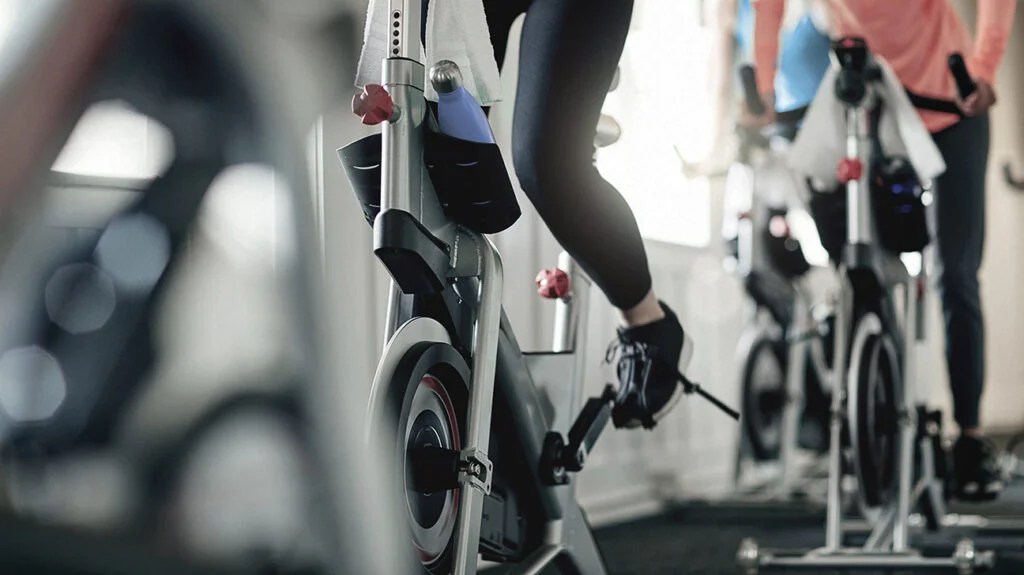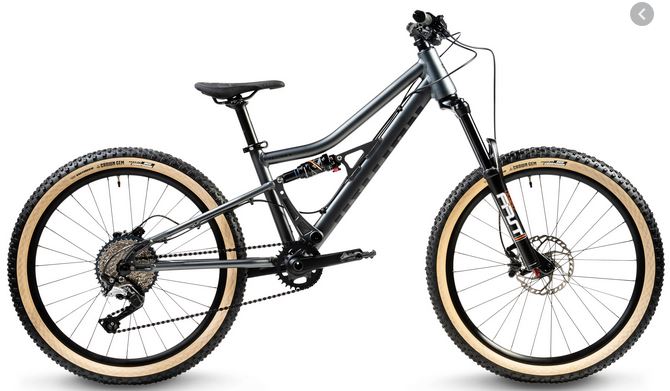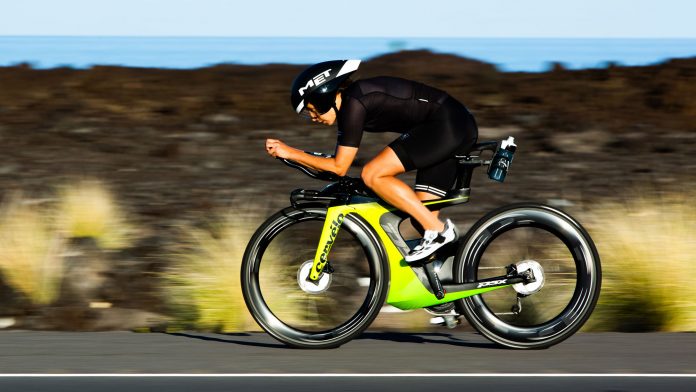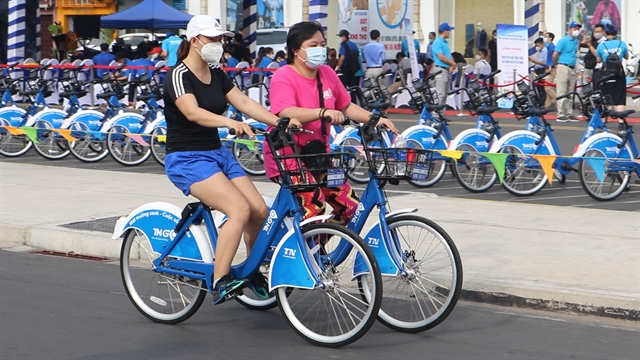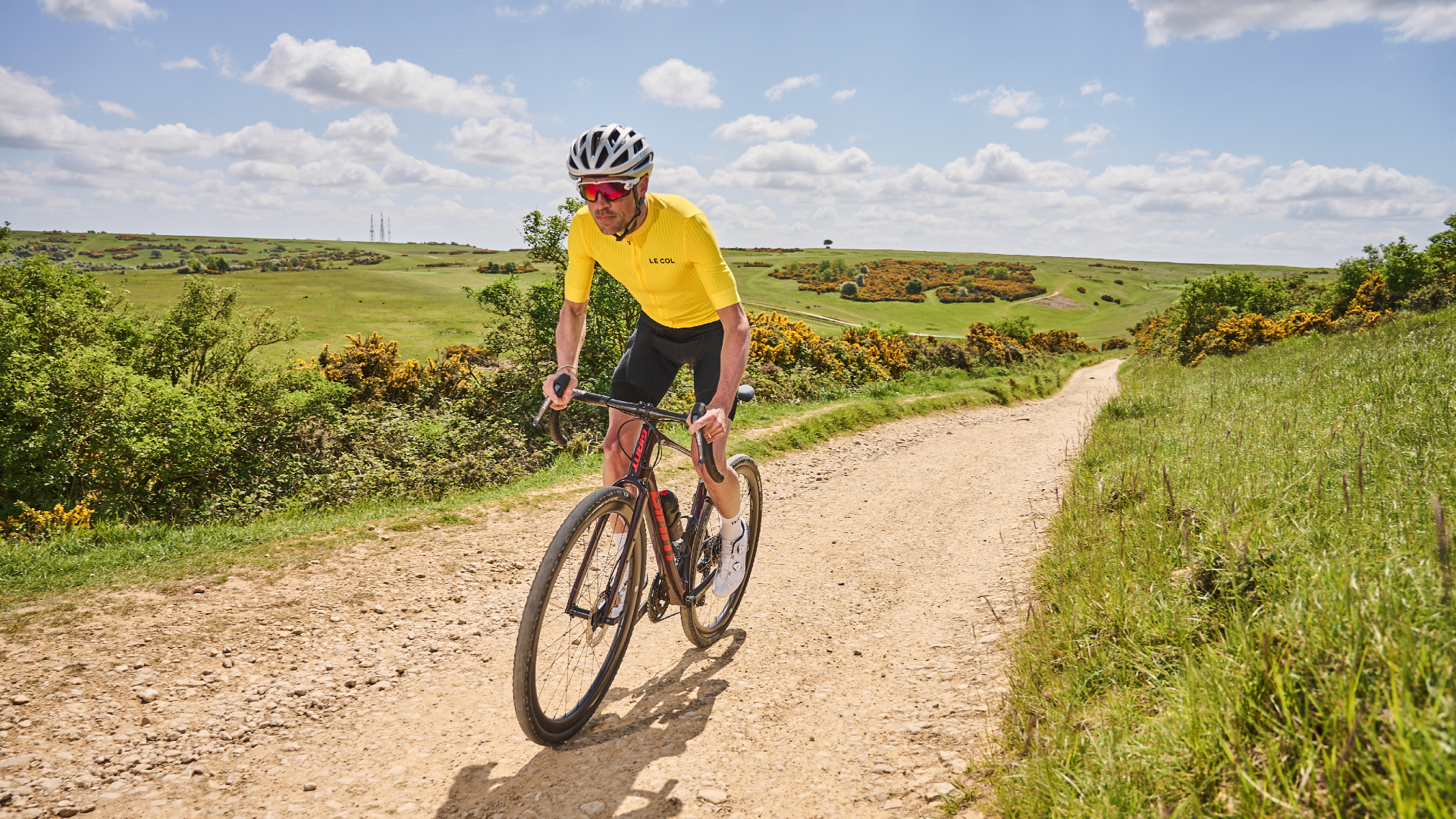Introduction

When it comes to choosing a bike, there are various types available to suit different needs and preferences. Whether you’re a thrill-seeking mountain biker, a speed-loving road cyclist, or someone who prefers a comfortable ride in the city, there’s a bike type that’s perfect for you. In this comprehensive guide, we’ll explore the different bike types and their defining characteristics, helping you make an informed decision on which bike is the right fit for your lifestyle.
Hardtail mountain bikes
Mountain bikes are designed for off-road adventures, tackling rugged terrains and conquering challenging trails. There are two main types of mountain bikes: hardtail and full suspension. Hardtail mountain bikes have front suspension forks to absorb shocks and bumps, providing a smoother ride.
On the other hand, full suspension mountain bikes have both front and rear suspension, offering even greater comfort and control on rough terrains.
Hardtail mountain bikes are a popular choice among riders who prioritize efficiency and climbing ability. As the name suggests, these bikes have front suspension forks to absorb shocks and vibrations, providing a smoother ride on rough terrains.
Unlike full suspension bikes, hardtail mountain bikes do not have rear suspension, which makes them lighter and more efficient when it comes to climbing hills. They are ideal for riders who enjoy cross-country trails and want a bike that can handle both uphill and downhill sections with ease.
With their wide range of gears and knobby tires, hardtail mountain bikes offer excellent traction and control, making them a versatile choice for off-road adventures.
For riders seeking the ultimate in comfort and control on rough terrains, full suspension mountain bikes are the way to go. These bikes feature both front and rear suspension, allowing for maximum shock absorption and a smoother ride.
The front suspension fork and rear shock work together to absorb bumps and vibrations, providing enhanced traction and stability.
Full suspension mountain bikes excel in downhill descents and technical trails, as the suspension helps to maintain contact with the ground and improve handling.
While they may be slightly heavier and more expensive than hardtail bikes, the added comfort and performance make them a popular choice among experienced riders and adrenaline junkies.
Time Trial bikes
Time trial bikes, often referred to as TT bikes, are specifically designed for time trial events and triathlons where speed and aerodynamics are crucial.
These bikes are engineered to minimize air resistance and maximize the efficiency of the rider, allowing them to achieve the fastest possible times against the clock. Here are key details about time trial bikes:
- Aerodynamic Frame Design:
- The frame of a time trial bike is aerodynamically optimized to reduce drag. This often involves a teardrop-shaped or truncated airfoil tube design, minimizing air resistance and improving the bike’s efficiency at high speeds.
- Integrated Aerodynamics:
- Many time trial bikes feature integrated components such as handlebars, stems, and seat posts to create a seamless and aerodynamic profile. Cables are often internally routed to further reduce air resistance.
- Geometry:
- Time trial bike geometry is designed to put the rider in an aerodynamic position, often characterized by a steep seat tube angle and a low front end. This position minimizes wind resistance and allows for efficient power transfer.
- Aero Handlebars and Extensions:
- Time trial bikes are equipped with aerodynamic handlebars that allow the rider to adopt a tucked position, reducing frontal area and improving aerodynamics. Aero extensions provide additional hand positions for optimal aerodynamic efficiency.
- Disc Wheels and Deep-Section Rims:
- To further enhance aerodynamics, time trial bikes often feature deep-section rims or full disc wheels. These designs help reduce drag caused by side winds and contribute to the bike’s overall speed.
- Aero Helmets:
- Riders often wear specialized aero helmets designed to reduce air resistance. These helmets typically have a streamlined shape and may feature a tail that helps smooth airflow.
- Triathlon-Specific Features:
- Time trial bikes are commonly used in triathlons, and some models may include specific features for triathletes. These features may include storage solutions for nutrition and tools, as well as a geometry that accommodates the transition from cycling to running.
- Single Chainring:
- Many time trial bikes use a single chainring in the front, simplifying the drivetrain and reducing aerodynamic drag. The gearing is often optimized for sustained high-speed efforts.
- Shifting Systems:
- Time trial bikes often feature electronic shifting systems that provide precise and quick gear changes. The buttons for shifting are often integrated into the aero extensions or located on the brake levers for minimal disruption to the rider’s aerodynamic position.
- Forward-Positioned Saddle:
- The saddle on a time trial bike is often positioned farther forward compared to traditional road bikes. This helps the rider maintain an aerodynamic position while producing power efficiently.
- Brakes:
- Time trial bikes usually have aero brakes that are integrated into the frame and fork to reduce air resistance. Some models feature disc brakes, providing reliable stopping power even in wet conditions.
- Customization:
- Professional riders often have time trial bikes customized to their body dimensions and aerodynamic preferences. This level of customization helps optimize the bike’s performance for individual athletes.
Time trial bikes are precision machines designed for speed and efficiency in solo racing against the clock. Their aerodynamic features, integrated components, and specialized design make them well-suited for time trials and triathlons, where every second counts.
When choosing a time trial bike, it’s essential to consider factors such as aerodynamics, fit, and the specific requirements of the events you plan to participate in.
Racing bikes
Racing bikes, also known as road bikes, are designed for speed and efficiency on smooth pavement. These bikes are lightweight and equipped with skinny tires, drop handlebars, and a more aerodynamic riding position.
They are perfect for those who want to ride fast, whether it’s for commuting, competing, or simply for the thrill of speed. Racing bikes are not suitable for off-road use or carrying heavy loads, but they excel in providing a smooth and exhilarating ride on tarmac roads.
With their high gear ratio and sleek design, racing bikes are the go-to choice for cyclists who crave speed and performance.
Touring bikes
Touring bikes are designed specifically for long-distance travel, providing comfort, durability, and versatility for riders who embark on extended journeys. Whether it’s a cross-country adventure, bikepacking trip, or touring through different countries, touring bikes are built to handle a variety of terrains and conditions. Here are some key details about touring bikes:
- Frame Design:
- Touring bike frames are typically designed for stability and comfort during long rides. They often have a longer wheelbase and a more relaxed geometry to provide a comfortable riding position.
- Materials:
- Touring bike frames are commonly made from steel or aluminum. Steel is favored for its durability and ability to absorb vibrations, providing a smoother ride. Aluminum frames are lighter but may transmit more road vibrations.
- Racks and Mounting Points:
- One of the defining features of touring bikes is the presence of multiple mounting points for racks and panniers. These allow cyclists to carry luggage and gear easily, distributing the weight evenly for better stability.
- Tire Clearance:
- Touring bikes often have wider tire clearance to accommodate larger tires. This is advantageous for handling varied road surfaces and carrying heavy loads without sacrificing stability.
- Gearing:
- Touring bikes come equipped with a wide range of gears to handle diverse terrains, including steep climbs and descents. This helps riders maintain a comfortable cadence regardless of the landscape.
- Brakes:
- Most touring bikes feature reliable and durable braking systems. Traditional cantilever brakes and disc brakes are common choices, providing ample stopping power, especially when carrying heavy loads.
- Comfort Features:
- Touring bikes prioritize rider comfort with features such as a relaxed riding position, ergonomic handlebars, and a comfortable saddle. Some models may also have vibration-damping technologies to reduce fatigue on long rides.
- Fender and Mudguard Compatibility:
- Touring bikes often come with fender and mudguard mounts to protect the rider and bike from water and mud. This is especially useful for touring in different weather conditions.
- Dynamo Hub and Lighting Options:
- For long-distance touring, some bikes are equipped with a dynamo hub that generates electricity as the wheels turn. This power source can be used to charge devices or power integrated lighting systems for enhanced visibility during night rides.
- Versatility:
- Touring bikes are versatile and can handle a mix of on-road and off-road conditions. This makes them suitable for various types of touring, from paved roads to gravel paths and even light trails.
- Durability:
- Given the demands of long-distance touring, these bikes are built to be durable and capable of withstanding the rigors of extended use. This durability is essential for reliability and longevity during extended journeys.
When selecting a touring bike, it’s crucial to consider the specific needs of your planned tours and the type of terrain you’ll encounter. Additionally, proper bike fit and comfort are key factors in ensuring an enjoyable and successful touring experience.
Endurance bikes
Endurance bikes, also known as sportive bikes, are designed for long-distance riding and comfort. These bikes have a more relaxed frame geometry, allowing the rider to maintain a more upright position for extended periods of time.
They typically feature wider tires for added stability and shock absorption, as well as a plushy saddle for enhanced comfort. Endurance bikes are perfect for riders who enjoy spending hours in the saddle, whether it’s for touring, commuting, or participating in endurance events.
With their focus on comfort and endurance, these bikes are a popular choice among cyclists who prioritize long-distance riding without sacrificing comfort.
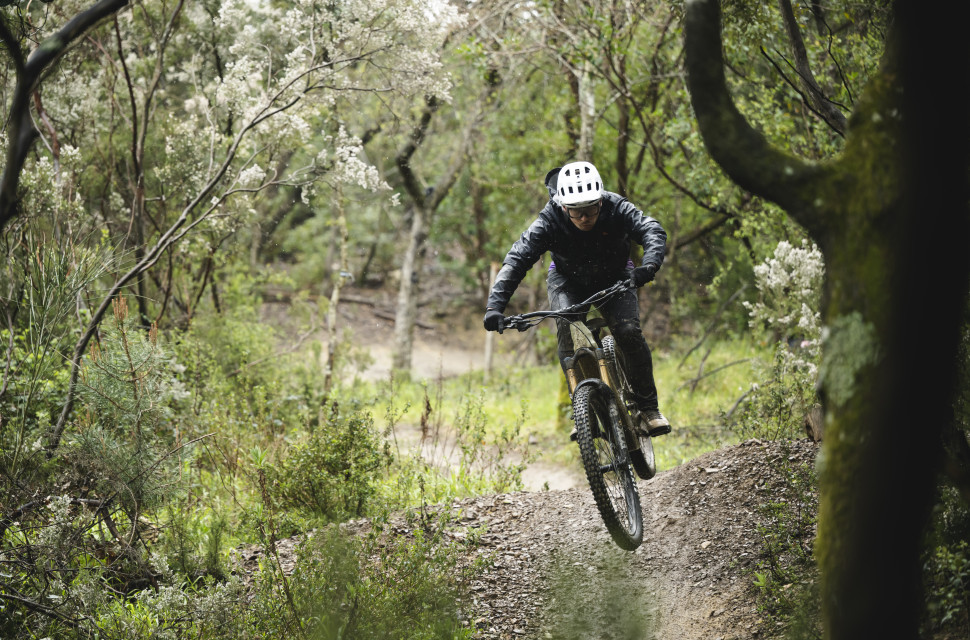
Hybrid bikes
Hybrid bikes are versatile bicycles designed to combine features from both road bikes and mountain bikes, creating a versatile and adaptable option for a variety of riding conditions. Here are some key details about hybrid bikes:
- Versatility:
- Hybrid bikes are known for their versatility, making them suitable for a wide range of riding environments. They can handle paved roads, gravel paths, and light trails, making them an excellent choice for commuters and recreational riders.
- Frame Design:
- Hybrid bike frames are a blend of road and mountain bike designs. They typically feature a comfortable geometry with a more upright riding position, providing a good balance between efficiency and comfort.
- Tires:
- Hybrid bikes come with medium-width tires, offering a smooth and stable ride on various surfaces. These tires are wider than those on road bikes but narrower than those on mountain bikes, providing a good compromise for different terrains.
- Gearing:
- Hybrid bikes often come equipped with a wide range of gears, allowing riders to handle different inclines and terrains comfortably. This makes them suitable for both flat urban streets and hilly areas.
- Handlebars:
- Most hybrid bikes feature flat or slightly raised handlebars, promoting an upright riding position for enhanced comfort and visibility. This design is well-suited for casual riders and commuters.
- Brakes:
- Hybrid bikes typically come with reliable and responsive braking systems. Common options include V-brakes, disc brakes, or a combination of both, providing effective stopping power in various conditions.
- Suspension:
- While some hybrid bikes have front suspension forks for added comfort on rough terrain, others feature a rigid fork for a more straightforward design and improved efficiency on smoother surfaces.
- Fenders and Racks:
- Many hybrid bikes come equipped with eyelets or mounting points for fenders and racks. This makes them practical for commuting, as riders can easily add accessories for carrying cargo or protecting against mud and water.
- Comfort Features:
- Hybrid bikes prioritize rider comfort with features like padded saddles, ergonomic grips, and a design that reduces strain on the back and neck. The comfortable riding position makes them appealing for longer rides.
- Lightweight Construction:
- Hybrid bikes are generally lighter than mountain bikes, contributing to their efficiency on paved roads. The lightweight construction makes them easy to handle and maneuver.
- Ideal for Commuting:
- Hybrid bikes are popular choices for commuting due to their comfort, versatility, and the ability to handle different road conditions. They often come with features like built-in lights, racks, and mudguards.
- Entry-Level Friendly:
- Hybrid bikes are suitable for riders of various skill levels, making them a popular choice for beginners. The combination of comfort and versatility appeals to those looking for an all-around bike for different purposes.
When choosing a hybrid bike, consider your specific riding needs, such as the type of terrain you’ll encounter and the distance of your rides. Test rides and proper bike fit are essential to ensure that the hybrid bike meets your comfort and performance expectations.
City bikes
City bikes, also known as commuter or urban bikes, are a versatile option for riding and commuting in urban environments. These bikes combine the characteristics of hybrid bikes and cruiser bikes, offering a comfortable upright riding position and the wheel size of a hybrid bike.
City bikes are designed to be practical and convenient for riding in regular clothes, with features such as fenders, chain guards, and skirt guards on the rear wheel. They may also have internally-geared rear hubs for ease of use and maintenance, as well as built-in generators and lights for safety when riding after dark.
With their hybrid and cruiser bike features, city bikes are a popular choice for urban commuters looking for a comfortable and practical ride.
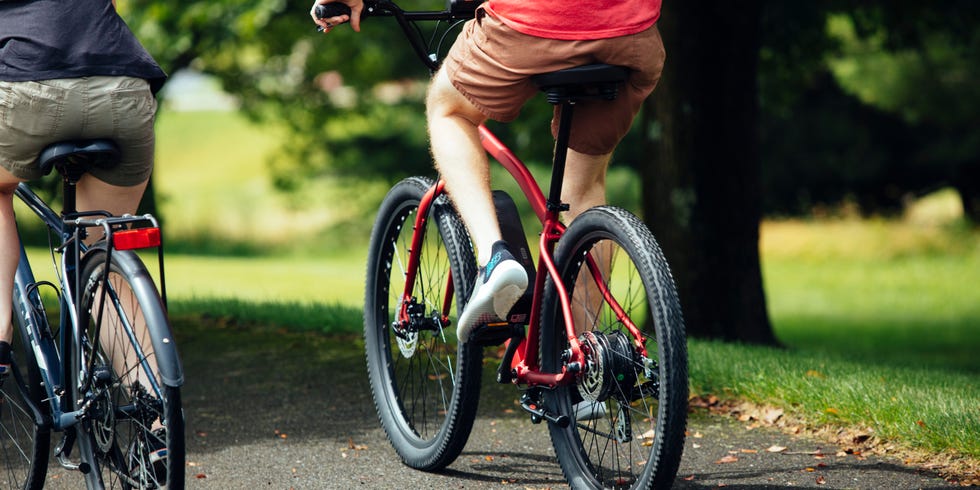
BMX bikes
BMX bikes, short for Bicycle Motocross, are specialized bicycles designed for off-road and stunt riding. Originally developed for racing on dirt tracks, BMX bikes have evolved into various styles, including freestyle BMX for performing tricks and maneuvers. Here are some key details about BMX bikes:
- Frame Design:
- BMX bike frames are typically compact and sturdy, built to withstand the rigors of off-road riding and tricks. The frame design may vary between styles, such as racing BMX and freestyle BMX.
- Wheel Size:
- BMX bikes are characterized by small wheels, usually around 20 inches in diameter. The smaller wheel size enhances maneuverability, making it easier for riders to perform tricks and navigate tight spaces.
- Single-Speed:
- BMX bikes are typically single-speed, emphasizing simplicity and durability. A single gear is often sufficient for the short bursts of speed required in BMX racing or the precise control needed for tricks.
- Brakes:
- BMX bikes traditionally feature a simple and effective braking system. Some models use a rear caliper brake, while others may utilize a combination of front and rear brakes for enhanced stopping power during tricks.
- Handlebars:
- BMX handlebars are known for their distinctive design, often with a crossbar for added strength. The handlebars are positioned higher than on other types of bikes, promoting an upright riding position for better control during jumps and tricks.
- Gearing:
- BMX bikes usually have a single gear ratio optimized for quick acceleration and maneuverability. The simplicity of the drivetrain is well-suited for the dynamic nature of BMX riding.
- Freestyle vs. Racing BMX:
- Freestyle BMX: Designed for performing tricks and stunts in skateparks, on street features, or in dirt jumps. These bikes often have reinforced frames and components to withstand the impact of landings.
- Racing BMX: Built for speed on dirt tracks with jumps and turns. Racing BMX bikes tend to have lighter frames, larger sprockets, and narrower tires for optimal speed.
- Pegs:
- Freestyle BMX bikes may come with pegs attached to the axles, allowing riders to perform grinds and other tricks. Racing BMX bikes typically don’t have pegs to reduce weight.
- Durable Construction:
- BMX bikes are built to be durable and robust to handle the stresses of jumps, landings, and tricks. Frames are often made from materials like chromoly steel or aluminum to balance strength and weight.
- Footpegs:
- Freestyle BMX bikes often feature footpegs on the front and rear axles. These pegs provide additional platforms for riders to perform tricks and stunts.
- Hub Configurations:
- BMX bikes may have different hub configurations. Cassette hubs and freecoaster hubs are common, with freecoaster hubs allowing the rear wheel to turn backward without engaging the pedals.
- Gyro System:
- Freestyle BMX bikes often feature a gyro system, allowing the handlebars to spin continuously without tangling the brake cables. This is beneficial for riders who perform spins and bar spins.
BMX bikes cater to riders who enjoy the thrill of off-road racing or the creative expression of freestyle tricks. When choosing a BMX bike, consider your riding style, whether it’s focused on racing, street riding, park riding, or dirt jumping, and select a bike that suits your specific preferences and needs.
Comfort bikes
Comfort bikes, also known as modern versions of the old roadster and sports roadster bicycles, are designed to provide a comfortable and upright riding position. These bikes typically have a modified mountain bike frame with a tall head tube, allowing riders to maintain an upright position.
With 26-inch wheels and smooth or semi-slick tires, comfort bikes offer a smooth ride on various surfaces. They often incorporate features such as front suspension forks, seat post suspension, and wide plush saddles for added comfort. Comfort bikes are perfect for those who prioritize a relaxed and enjoyable riding experience, whether it’s for casual rides around the neighborhood or longer commutes.
Foldable bikes
Foldable bikes, also known as folding bikes, are innovative and practical bicycles designed for easy storage and transport.
These bikes are known for their compact size, portability, and versatility, making them an excellent choice for commuters, urban dwellers, and individuals with limited storage space. Here are some key details about foldable bikes:
- Foldability:
- The defining feature of foldable bikes is their ability to collapse into a more compact size. This makes them easy to carry, store, and transport, whether on public transportation, in a car trunk, or under a desk.
- Frame Design:
- Foldable bikes come in various frame designs, including hinged frames, mid-folding designs, and triangle hinge designs. The frame is typically made from lightweight materials like aluminum to keep the overall weight manageable.
- Size and Weight:
- Foldable bikes vary in size and weight, but they are generally lighter and more compact than traditional bicycles. The compact size makes them convenient for storage in small apartments, offices, or other confined spaces.
- Folding Mechanisms:
- Different foldable bikes use various folding mechanisms, such as hinge points, quick-release levers, and magnetized closures. The folding process is designed to be quick and easy, allowing riders to fold and unfold their bikes with minimal effort.
- Wheel Size:
- Foldable bikes typically have smaller wheels compared to standard bikes, which contributes to their compact design. Common wheel sizes include 16 inches and 20 inches, providing a good balance between portability and ride comfort.
- Portability:
- Foldable bikes are highly portable, allowing users to carry them on public transportation, store them in small spaces, or take them on trips. Many models come with a carry bag or carrying handle to enhance convenience.
- Commute-Friendly:
- Foldable bikes are popular among commuters who need a convenient and flexible transportation option. They can be easily folded and taken on trains, buses, and other public transportation, reducing the need for a dedicated parking space.
- Adjustability:
- Many foldable bikes offer adjustable components, such as the seat post and handlebars, to accommodate riders of different heights. This adaptability enhances the comfort and usability of the bike for a wide range of users.
- Durability:
- Despite their compact design, foldable bikes are designed to be durable and capable of withstanding regular use. Quality materials and construction ensure that the folding mechanisms remain reliable over time.
- Versatility:
- Foldable bikes are versatile and suitable for various riding conditions. While they may not be ideal for high-performance racing or challenging off-road trails, they are well-suited for commuting, leisure rides, and urban exploration.
- Storage Convenience:
- Foldable bikes can be stored easily in small spaces, such as closets, under desks, or in the trunks of cars. This convenience makes them an excellent choice for individuals with limited storage options.
When choosing a foldable bike, consider factors such as the folding mechanism, wheel size, weight, and overall design to ensure it meets your specific needs for portability and functionality. Additionally, check for features like fenders, racks, and gears, depending on your intended use.
Electric bikes

Electric bikes, also known as e-bikes, are a game-changer in the world of cycling. These bikes are equipped with a battery and a motor, providing motor assistance to the rider. With the motor ‘kicking in’ when you start pedaling, electric bikes offer a push that makes cycling effortless.
They are perfect for those who want to go twice the distance for half the effort. Electric bikes come in various types, including comfort bikes. Comfort bikes, also known as modern versions of the old roadster and sports roadster bicycles, are designed to provide a comfortable and upright riding position.
They feature a modified mountain bike frame with a tall head tube, allowing riders to maintain an upright position. With their smooth or semi-slick tires and features like front suspension forks and seat post suspension, comfort bikes offer a smooth and enjoyable ride on various surfaces.
Whether you’re going for casual rides around the neighborhood or longer commutes, electric comfort bikes provide a relaxed and comfortable riding experience.
Gravel bikes
Gravel bikes, also known as adventure bikes or all-road bikes, are designed for versatile performance on a variety of surfaces, including gravel roads, dirt paths, and paved streets.
These bikes have become increasingly popular for riders who want a versatile option that can handle different terrains. Here are key details about gravel bikes:
- Frame Design:
- Gravel bike frames typically have a geometry that strikes a balance between the aggressive positioning of road bikes and the more relaxed stance of mountain bikes. The frame is designed for stability and comfort during long rides.
- Tire Clearance:
- Gravel bikes are known for their wider tire clearance compared to traditional road bikes. This allows riders to use larger, knobbier tires, providing better traction and stability on gravel, dirt, and rough surfaces.
- Tires:
- Gravel bike tires are wider and have a tread pattern suitable for mixed terrain. The tire width can range from around 32mm to 45mm or more, offering improved stability and control on gravel and uneven surfaces.
- Gearing:
- Gravel bikes typically have a wide range of gears to accommodate varied terrains. They often feature compact or sub-compact chainrings paired with wide-range cassettes, providing the rider with both high-speed options on roads and lower gears for climbing on gravel.
- Brakes:
- Gravel bikes commonly feature disc brakes, offering reliable stopping power in various conditions. Disc brakes also provide better modulation and performance, especially in wet or muddy environments.
- Handlebars:
- Gravel bikes may come with drop handlebars similar to those on road bikes, providing multiple hand positions for comfort on long rides. Some models, however, feature flared drop bars, offering additional control and stability on rough terrain.
- Versatility:
- Gravel bikes are versatile, suitable for a range of riding styles, including gravel grinding, bikepacking, commuting, and long-distance touring. Their ability to handle both paved and unpaved surfaces makes them a go-to choice for riders seeking adventure.
- Mounting Points:
- Gravel bikes often come equipped with multiple mounting points for racks, fenders, and bottle cages. This allows riders to carry gear for bikepacking trips or add accessories for commuting and touring.
- Comfort Features:
- Gravel bikes prioritize rider comfort with features like a more relaxed geometry, wider tires for increased cushioning, and the ability to absorb vibrations. These design elements enhance comfort during long rides on mixed terrain.
- Lightweight Construction:
- While not as lightweight as dedicated road bikes, gravel bikes are designed to be relatively light, providing efficiency on roads while still being durable enough for off-road use.
- Suspension:
- Some gravel bikes come with front suspension systems, either built into the fork or as a separate component. This provides additional comfort and control on rough terrain without the complexity of a full suspension system.
- Tubeless Tire Compatibility:
- Many gravel bikes are compatible with tubeless tires, which can be run at lower pressures for improved traction and reduced risk of punctures.
Gravel bikes offer a fantastic balance between the speed of road bikes and the versatility of mountain bikes. When choosing a gravel bike, consider factors such as tire clearance, gearing, and frame material based on your intended use, whether it’s weekend gravel rides, bikepacking adventures, or a mix of both.
And, we will provide you with a summary table to sum up the comparison of the most popular bike types:

| Bike Type | Primary Use | Frame Design | Tire Type | Handlebars | Gearing | Brakes | Special Features |
|---|---|---|---|---|---|---|---|
| Road Bikes | Speed on paved roads | Lightweight, aggressive | Narrow, smooth | Drop bars | Multiple gears, often many | Caliper or disc brakes | Aerodynamic design, lightweight construction, ideal for long-distance road riding |
| Mountain Bikes | Off-road and rugged terrain | Sturdy, often with suspension | Wide, knobby | Flat or riser bars | Wide range for varied terrain | Disc brakes, sometimes V-brakes | Suspension systems, durable construction, wide tires for traction |
| Hybrid Bikes | Versatile, mix of road and trail | Balanced geometry | Medium-width, versatile | Flat or riser bars | Varied, suitable for mixed terrain | Varies (commonly disc brakes) | Versatility for commuting, comfortable geometry, suitable for light trails |
| BMX Bikes | Freestyle tricks, racing | Compact and sturdy | Small, wide | Upright or slightly raised | Single-speed | U-brakes, disc brakes for some models | Sturdy build, designed for tricks and jumps, compact frame |
| Gravel Bikes | Mixed terrain and adventure | Balanced geometry | Wide, with tread | Drop bars or flared drops | Varied, often wide range | Disc brakes | Wider tire clearance, versatile for on and off-road riding |
| Time Trial Bikes | Time trials and triathlons | Aerodynamic, compact | Narrow, often with deep rims | Aero bars, integrated components | Single or double chainring, wide range | Aero brakes, disc brakes for some models | Aerodynamic design, integrated components, optimized for speed |
| Electric Bikes | Assisted pedaling for various uses | Varies | Varies | Varies | Varies (often electric) | Varies (commonly disc brakes) | Electric motor assistance, various styles and applications |
Conclusion on bike types
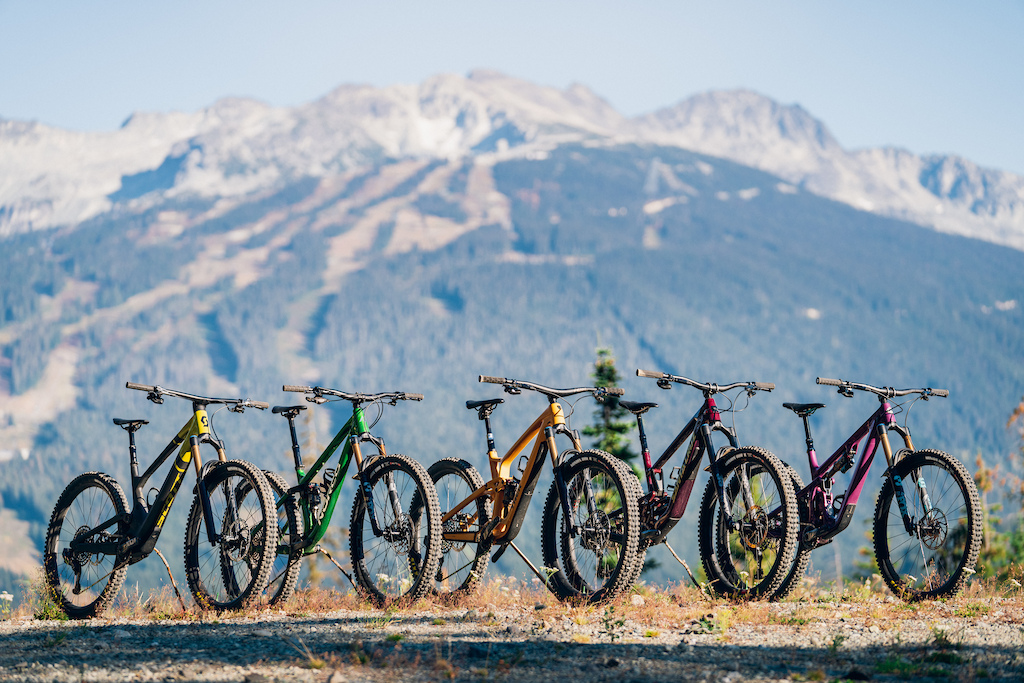
In conclusion, there are various types of bikes available to suit different riding preferences and needs. Mountain bikes, such as hardtail and full suspension bikes, are designed for off-road adventures and provide excellent control and stability.
Road bikes, including racing and endurance bikes, are built for speed and efficiency on paved roads. Hybrid bikes, such as city and comfort bikes, offer a versatile option for both commuting and leisure rides. Cruiser bikes provide a laid-back and comfortable riding experience, while BMX bikes are perfect for tricks and stunts. Folding bikes are compact and convenient for storage and transportation, while electric bikes, including comfort and city bikes, offer motor assistance for effortless riding.
With such a wide range of bike types available, there is a perfect bike for every rider and every purpose.
Sources:
- https://www.bicycle-guider.com/bike-articles/types-of-bikes/
- https://www.centurycycles.com/buyers-guides/bicycle-types-how-to-pick-the-best-bike-for-you-pg9.htm
- https://www.edinburghbicycle.com/blog/types-of-bikes-buying-guide
- https://en.wikipedia.org/wiki/List_of_bicycle_types
FAQ on bike types
-
What are the 4 different bikes?
TYPES OF BIKES:
Road bikes: Roads.
Mountain bikes: Off road with hardtail mountain bikes or full suspension bikes.
Hybrid/commuter bikes: A bit of everything. …
Gravel Road bikes: A bit of everything, but with a road bike feel. …
Folding bikes: Commuting, leisure or touring for the short-on-space. -
Are there different types of bicycles?
The main categories of bicycles concerning their intended use are: Road bicycles are designed for traveling at speed on paved roads. Touring bicycles are designed for bicycle touring and long journeys. They are durable and comfortable, capable of transporting baggage, and have a wide gear range.
-
What is my bike type?
Riding Surfaces
Bike Types
Pavement (from pristine to potholed) and natural surfaces
Hybrid bikes and electric bikes
All-road riding (from asphalt to outback)
Gravel and touring bikes
Dirt roads and trails
Mountain bikes and electric bikes -
What type of bike is best for cycling?
Road bikes are best for riding on smooth, asphalted roads. …
Mountain bikes are best for riding off-road. …
Gravel bikes are booming and growing ever more popular. …
Hybrid bikes are a very popular choice for bike commuters, thanks to their versatility.
Originally posted 2023-11-12 01:39:43.
